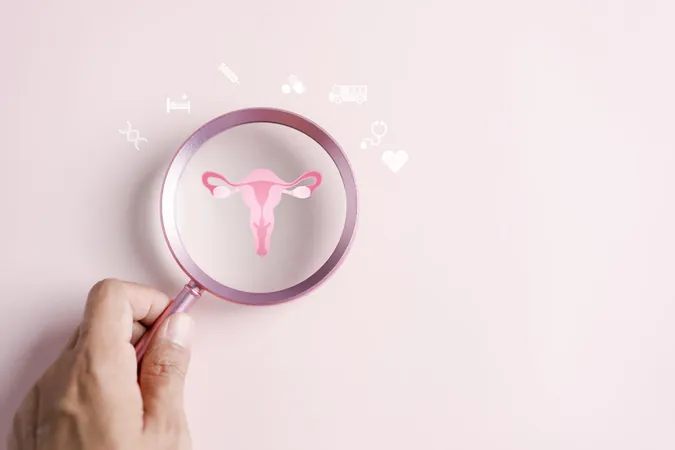
New Study Reveals Surprising Low Recurrence of Uterine Rupture in Subsequent Pregnancies
2025-05-17
Author: Arjun
Unraveling the Risks of Uterine Rupture in Future Pregnancies
A groundbreaking study showcased at the 2025 American College of Obstetrics & Gynecology Annual Conference in Minneapolis has revealed some astonishing insights about uterine rupture during pregnancy. While women who experience a uterine rupture are known to face higher odds of preterm delivery in subsequent pregnancies, new findings indicate that the risk of recurrent uterine rupture is remarkably low.
The Insights from the Study
The research highlighted that previous estimates had suggested a recurrence rate of up to 42% for uterine rupture in future pregnancies. In light of this, the American College of Obstetrics & Gynecology now recommends planning for cesarean deliveries at 36 to 37 weeks in order to mitigate potential complications. The study aims to refine these management strategies based on the outcome data.
Research Methodology and Findings
Conducted over 14 years, from 2009 to 2023, this retrospective study analyzed cases of uterine rupture reported at a major county hospital. A total of 89 cases were documented, revealing a prevalence rate of 5 per 10,000 births. Among the 44 patients who were not sterilized, 12 subsequently became pregnant, with an average delivery around 35 weeks gestation.
Notably, 42% of these patients opted for scheduled cesarean deliveries, averaging at 37 weeks. Interestingly, half of the subjects went into labor naturally, though only one experienced prelabor rupture of membranes.
Delivery Outcomes and Complications
The study also examined the timeliness of deliveries, noting that four patients delivered before reaching 36 weeks. While most scheduled cesarean sections proceeded without incident, one case faced complications due to placenta accreta, necessitating a hysterectomy.
Crucially, there were no recorded instances of recurrent uterine rupture, suggesting a reassuringly low rate of this complication, despite the challenges of preterm labor in follow-up pregnancies.
Implications for Maternal and Fetal Health
Recognizing that uterine rupture is most prevalent in women with a prior cesarean delivery, it’s vital to understand the types of rupture: complete, where all layers of the uterine wall are torn, and incomplete, which affects only some layers. Complete ruptures can pose severe risks requiring immediate medical intervention—a reality underscored by the urgency of protecting the fetus from potential oxygen deprivation and related injuries.
Additionally, prior uterine trauma and surgical history are significant risk factors for rupture, with symptoms such as fetal distress, abdominal pain, and vaginal bleeding serving as alert signals for healthcare providers.
Key Takeaways for Expecting Mothers
In light of these findings, the Cleveland Clinic emphasizes the importance of transparent communication between patients and healthcare providers regarding medical history. This ensures that potential warning signs during pregnancy can be promptly identified and addressed, leading to healthier outcomes for both mothers and their babies.


 Brasil (PT)
Brasil (PT)
 Canada (EN)
Canada (EN)
 Chile (ES)
Chile (ES)
 Česko (CS)
Česko (CS)
 대한민국 (KO)
대한민국 (KO)
 España (ES)
España (ES)
 France (FR)
France (FR)
 Hong Kong (EN)
Hong Kong (EN)
 Italia (IT)
Italia (IT)
 日本 (JA)
日本 (JA)
 Magyarország (HU)
Magyarország (HU)
 Norge (NO)
Norge (NO)
 Polska (PL)
Polska (PL)
 Schweiz (DE)
Schweiz (DE)
 Singapore (EN)
Singapore (EN)
 Sverige (SV)
Sverige (SV)
 Suomi (FI)
Suomi (FI)
 Türkiye (TR)
Türkiye (TR)
 الإمارات العربية المتحدة (AR)
الإمارات العربية المتحدة (AR)